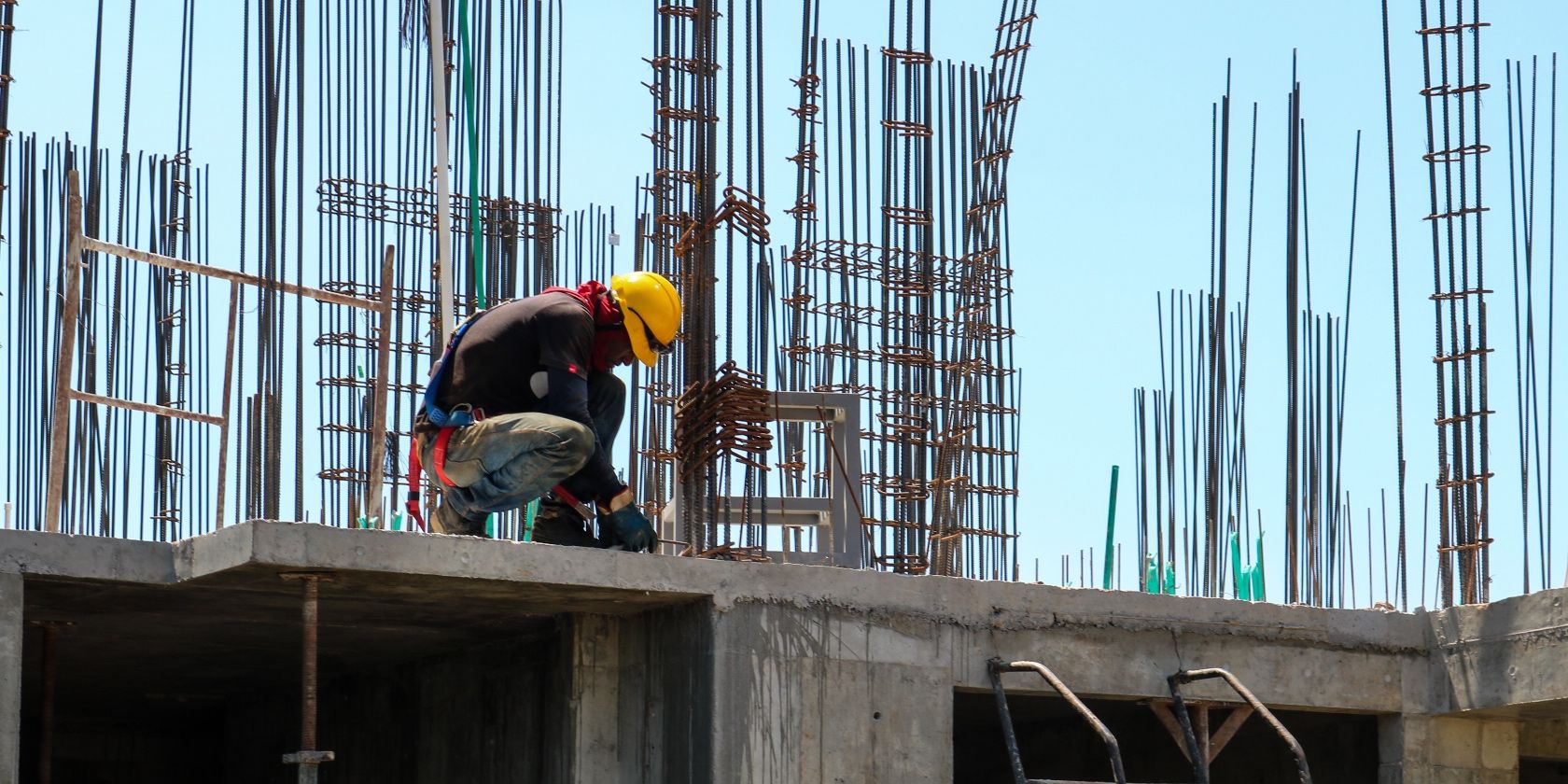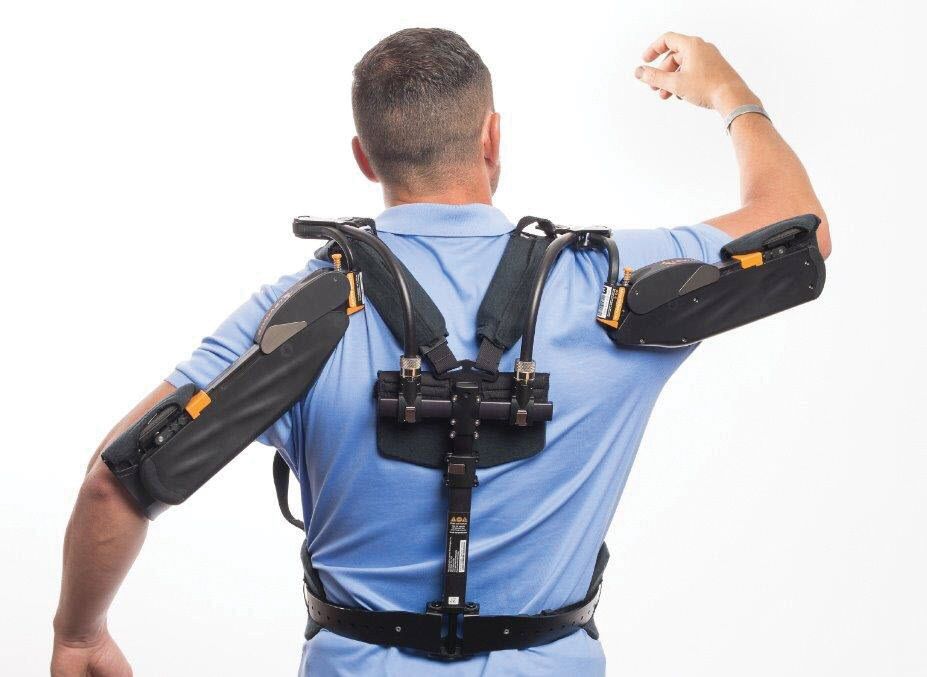Exoskeletons might seem like something straight out of a science fiction movie, but the truth is that they’re already being used in multiple industries. For instance: for almost three years, Toyota has required the use of exoskeletons in their production facilities to eliminate the risk of injury.
Exoskeletons can be either powered or unpowered and generally work by supporting the body to work for longer with less chance of injury. Powered exoskeletons can even increase the strength of their wearers.
So, what are some of the exoskeletons that are currently commercially available and revolutionizing work and sport as we know them?
1. Levitate AIRFRAME Exoskeleton
The Levitate AIRFRAME Exoskeleton is an upper-body frame that reduces exertion in the arms by up to 80%. This in turn reduces the fatigue and risk of injury of its wearers. The AIRFRAME is designed for repetitive tasks at chest level or above.
Toyota was the first to adopt exoskeletons in their manufacturing plants, and they use the AIRFRAME. They now require hundreds of employees to wear them, and BMW has followed suit.
So, how does the AIRFRAME work?
The AIRFRAME is a passive exoskeleton, meaning that it is not powered in any way. In other words, the effects of the exoskeleton are purely mechanical. Using patented technology, it works by counterbalancing weight that is held above the shoulders to reduce strain in the shoulders, neck, and back. Using a pulley system, the counterbalance provides extra leverage to the wearer so that they are able to perform repetitive overhead tasks with less energy and strain.
2. Ekso EVO
Ekso Bionics has produced a range of exoskeletons for use across the manufacturing, construction, and healthcare industries. The Ekso EVO is the latest iteration of their EksoVest, an exoskeleton designed to reduce the chance of injury and increase productivity for workers.
The Ekso EVO works by providing assistance to a worker’s arms using high-force actuators. These actuators are compact gas springs. When the wearer lifts their arms above their heads, the springs actuate, providing assistance for the arms to reduce strain and fatigue. The springs are customizable for varying levels of assistance depending on the work that’s being done.
Like the AIRFRAME, the EVO is completely unpowered, relying on mechanical processes alone.
3. SuitX
SuitX is another major player in the exoskeleton space. Like Levitate and Ekso Bionics, they too produce exoskeletons targeted at both occupational and rehabilitation uses. SuitX produces three modular exoskeletons: shoulderX, backX, and legX. These are designed to work individually or in unison to reduce strain, injury, and increase productivity.
The V3 shoulderX exoskeleton is designed for chest or above level work, like the EVO and AIRFRAME. It is another passive exoskeleton that works in a similar way, counterbalancing the weight held above and out from the body, reducing the effort required to lift objects and do repetitive actions. The backX and legX exoskeletons are also passive, using the same technology to reduce strain on the back and lower body.
The legX automatically engages while squatting, providing assistance for long periods. It also features a Locking Mode which essentially turns the legX into a chair, allowing the wearer to sit in place.
4. ReWalk and ReStore
ReWalk is a powered exoskeleton for use in patients who have spinal cord injuries and can no longer work. It is one of the several ambitious projects aimed at restoring function in disabled patients. The ReWalk provides hip and knee motion via powered robotics and was the first exoskeleton to be cleared by the FDA for use in rehabilitation.
The ReWalk works with battery-powered motors at the knee and hip joints. It works by sensing particular changes of movement. Leaning forward causes the ReWalk exoskeleton to take a step, and repeated body movements can continue the exoskeleton walking in a natural way.
ReWalk also produces a second exoskeleton called ReStore. This is a soft powered exoskeleton designed for victims of stroke who have lost function in their lower legs. The ReStore senses the movement of the leg and restores normal foot and lower leg movements using cables. The primary function of ReStore is the rehabilitation of injured patients.
5. Rex Bionics
REX is another powered exoskeleton that is used by physiotherapists to help patients that can no longer walk. It is currently used in the US, Australia, New Zealand, and the Middle East.
REX is powered by lithium-ion batteries that last approximately one hour per charge. The exoskeleton can help a patient perform squats, lunges, sitting, and various stretches. Its primary function is to help patients safely restore function to their muscles, and help physiotherapists by providing physical support for the patient.
6. Berkeley Lower Extremity Exoskeleton (BLEEX)
The BLEEX was originally funded by the Defense Advanced Research Projects Agency (DARPA) in 2000 and developed at Berkeley Robotics. It is a powered lower-body exoskeleton that uses four hydraulic joints for each leg (two at the hip, one at the knee, and one at the ankle) to increase soldier productivity.
The BLEEX is designed to assist soldiers and emergency personnel carry up to 165 pounds of equipment over any terrain for extended periods of time. The wearer only feels a few pounds of weight and retains almost full flexibility and agility to be able to move like normal.
7. Raytheon XOS2
The XOS2 has been in development for a long time and is commonly referred to as the “Iron Man” suit. Also funded by DARPA, the XOS2 is designed to increase human strength, agility, and endurance of a soldier inside it.
The XOS2 is fully powered and weighs around 95 kg. It is made of high-strength aluminum and steel and can increase strength by up to 17 times. Wearing the suit, a soldier is able to carry up to 200 pounds for long periods of time with no strain on the body. It is possible to run and walk with the exoskeleton and even climb stairs.
Exoskeletons: The Future of Work?
Exoskeletons are already proving to be invaluable tools in construction and manufacturing, reducing strain, injury, and fatigue for workers, and increasing their productivity and efficiency on the factory floor. And at the same time exoskeletons for healthcare are proving to be invaluable for rehabilitating patients who have lost the ability to walk.


